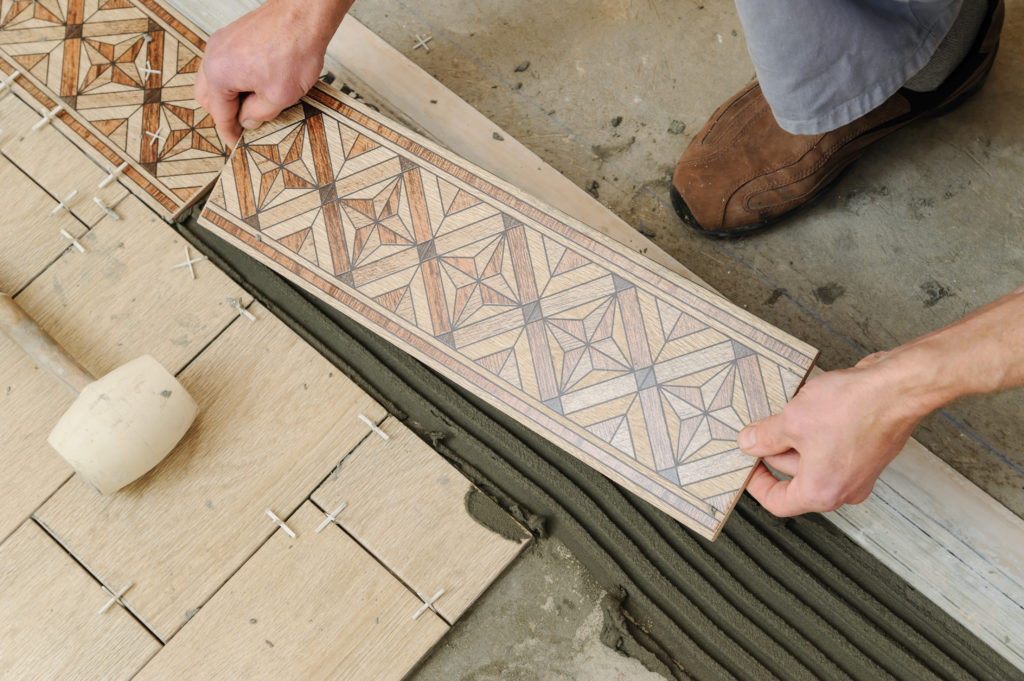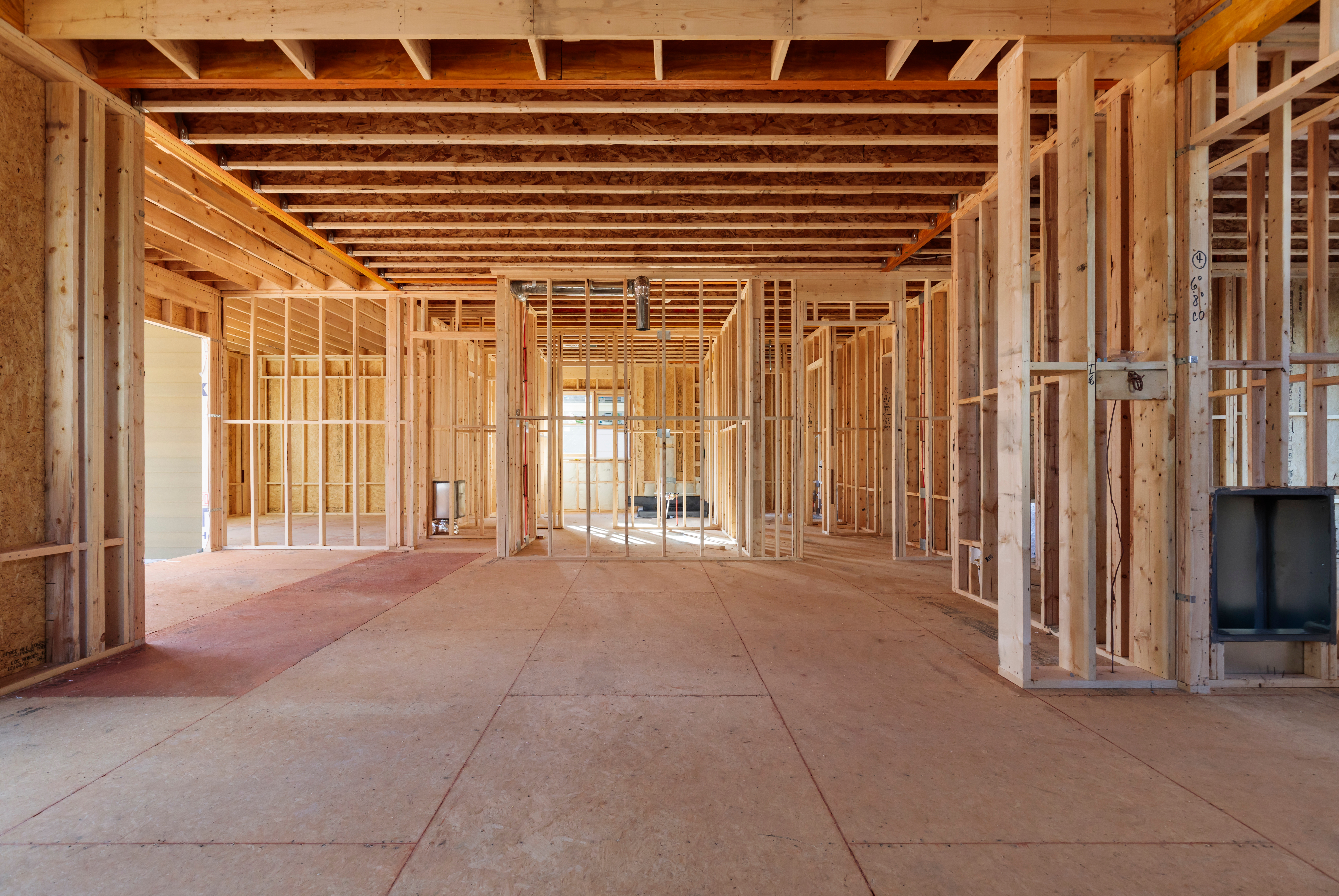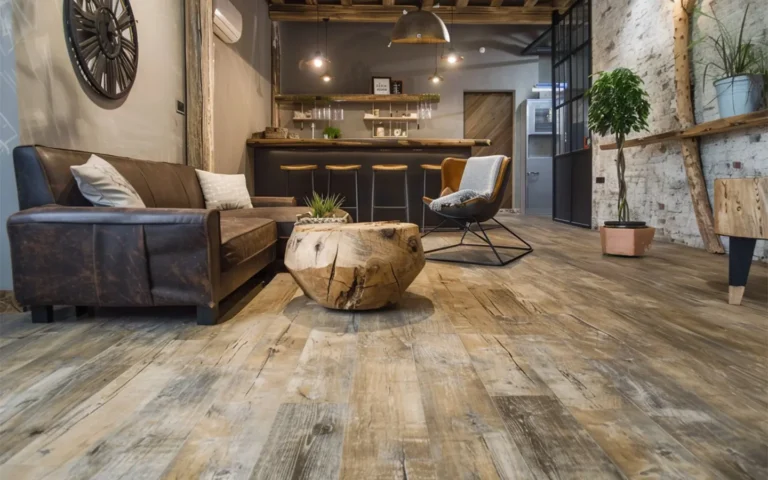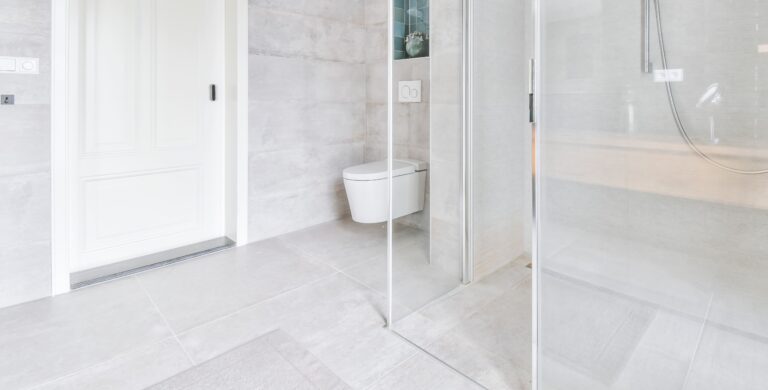This post may contain references or links to products from one or more partners of our parent company and/or subsidiaries of our parent company. For more information, visit this page.
April 14, 2020
We’ve all been there. You’re shopping for some brand new floors when somebody asks: “what do you have for subflooring?” And now you’re stumped, because you’re wondering—what is subflooring? And what the heck is the difference between an underlayment vs. subfloor?
Well, friend, it’s a question we hear all the time. And it’s an important one too. Because the integrity and durability of your floors—from fake wood flooring to the best bamboo flooring—are only as good as the subfloor beneath them.
Below, we’ll dive into the “what is subflooring” question. Then, we’ll explore the different materials subfloors are commonly made of. We’ll explain the underlayment vs. subfloor confusion, and finally, we’ll even show you which underlayments and subfloors are best for the most common types of flooring.
First of all: what is subflooring?
The information out there on the underlayment vs. subfloor question can be very confusing. Some articles use the terms interchangeably, but we’re here to tell ya: they’re different.
Basically, most floors have 3 parts:
- Joists are the structural ribs of your floors. These heavy-duty beams run under the floors of every room in your house. In an old house, you can go into the basement, look up, and see the joists.
- Subflooring covers the joists. Usually, it’s nailed to them. Together, the joists and subfloor distribute all the weight your floors take from above—running for the phone, flopping onto the heavy couch, dance parties with your dog (we don’t judge), your kids’ wrestling matches, etc.
- Last is the finished flooring that you see and walk on.
Underlayment vs. subfloor—what’s the difference?
Like we said, underlayment and subflooring are not the same thing. There are some types of flooring that require a special surface between the subfloor and the finished floor. This material, between the subfloor and the finished floor, is underlayment.
Why do you need an underlayment?
There are many reasons for adding underlayment: it can reinforce the subfloor for a heavy material like tile; it can act as a sound barrier for a second-floor room; perhaps most importantly, it can serve as a vapor barrier.
But we’re going to get into that in just a moment. First, there are different subflooring materials out there in the world.
Best Brands of 2024
What is the best material for a subfloor?
Subfloors (sometimes called the substrate) can be made from many different materials. As we mentioned, the purpose of a subfloor is to provide stability and integrity to the finished floor. A level, smooth, and dry subfloor also makes for easier installation of nearly all types of flooring.\
- Plywood is the most common type of subfloor. It’s constructed from wood veneer sheets that are glued together. It’s affordable, easy to work with, and durable.
- Concrete is a more common subfloor in basements, and sometimes on the first floor of residential homes that don’t have basements (we’re looking at you, California). Remember: if you’re working with a concrete subfloor, you should always test for moisture prior to installing your new floor. Concrete can be compromised if it’s cracked or holding moisture, and underlayment will likely be recommended since it can act as a vapor barrier.
- OSB, Oriented Strand Board, functions like plywood. It’s made of chunks of wood that are pressed and glued together. Think of it like a heavy-duty fiberboard.
- Honorable Mention: original hardwood floorboards. In old houses, rather than a subfloor, you’ll sometimes have original wood floors that can’t be refinished. But they can make for a sturdy subfloor. Your installer will likely add a plywood underlayment layer above them.
What’s the best material for an underlayment?
You’ll find that underlayment requirements will vary hugely for different types of flooring. Tile vs. laminate? Totally different. Carpet vs. laminate? Different. Carpet vs. hardwood? You guessed it—different.
Many warranties tell you what kind of underlayment you need to use for your new floors. In fact, some products require you to use a certain underlayment to avoid breaching your warranty (just read some Pergo reviews for a lot of examples).
Our advice? Ask a professional for advice on underlayment requirements; your warranty may depend on it. Now, let’s look at some popular types of flooring and see which underlayments are best for each.
What’s the best subfloor for wood flooring?
If you’re buying hardwood floors, you have two options: solid or engineered planks. Each option will have specific subfloor and underlayment requirements.
Solid hardwood floor planks require a sturdy subfloor, especially if the planks are going to be nailed or glued down. Typically, the subfloor for this type of installation is plywood or OSB. And should be at least ¾ of an inch thick.
What’s the best underlayment for wood flooring?
Want to avoid squeaky floors? (That is a rhetorical question.) Use building paper! Yep, put down an underlayment of 15-pound felt building paper between a wood subfloor and your hardwood planks, and you can reduce the chance of squeaky floors and control moisture.
Also: many types of wood flooring—most often engineered products—can be purchased with click-together flooring technology. That means they can be installed as “floating floors”, which don’t actually attach to the subfloor or underlayment.
There are some disadvantages of floating floors, but when it comes to subfloor and underlayment requirements, you won’t find many. Just use the underlayment specified by your floating product and you’ll be ready to go.
Pro tip: looking for the best engineered wood flooring on the market? Take a look at this guide to engineered bamboo flooring pros and cons.
What’s the best underlayment for laminate flooring?
Most laminate floors can also be installed as floating floors. And just as with engineered hardwood, your underlayment is going to depend entirely on the manufacturer’s recommendation.
Manufacturers will often suggest a plastic filament or foam layer. And some products come with the underlayment already attached. Ask your local flooring experts about these options, and remember what we said about underlayment vs. subfloor not being synonymous.
Not sure if laminate flooring is for you? Check out this article on laminate vs. hardwood floors for some guidance.
What’s the best underlayment for vinyl flooring?
Do you need underlayment for different types of vinyl flooring (like vinyl plank and LVT)? Short answer—yes.
Without a doubt, the number one pro in the vinyl flooring pros and cons debate is it’s one of the most durable flooring options in the market. And it’s a waterproof flooring option! That’s a literal grand slam in the flooring world.
But—these qualities all depend on proper installation. Vinyl flooring can be installed as a floating floor; it can go over wood, concrete, and most other solid subflooring materials as long as they’re level, dry, and smooth. But what about the underlayment?
Vinyl is similar to laminate flooring in that underlayment recommendations may vary. For example, some products come with a foam underlayment attached, others don’t. Again, ask your local flooring experts for accurate info and warranty requirements!
What’s the best subflooring for tile?

There’s a reason the age-old tile vs.wood floor debate is still going strong: tile is awesome! And, unlike solid wood planks, tile can be installed in any room of the house.
However: subfloor integrity is super important when you’re putting down tile. As with solid hardwood flooring, a thicker subfloor is necessary to support most types of tile. In addition, it’s important that the tile is installed on an even surface that won’t expand and contract, which can cause the tiles and grout to crack or dislodge.
What’s the best underlayment for tile?
If your subfloor is wood and you want to put down tile, you’re going to need an underlayment. As Bob Vila points out, the industry standard is a concrete backer board. A common tile installation method starts with a layer of thinset (a mortar adhesive) going over the subfloor. Then, the backer board is put over the thinset and screwed into the wooden subfloor.
You can install tile over concrete, vinyl, and even other tiles. They each have underlayment considerations that depend on the subfloor material and type of tile you are installing.
That said, due to all of the subfloor and underlayment concerns, this may not be the do-it-yourself flooring project you were looking for. If a weekend DIY project is more your speed, check out snap-together tile flooring.
Do I need an underlayment for carpet?
Absolutely. In this case, we’re considering carpet padding a type of underlayment since it goes between the subfloor and your wall-to-wall carpeting.
So, when thinking of all your carpet options, don’t forget the underlayment! Unless you’re thinking about peel-and-stick carpet tiles, which you can install directly on many subfloors.
If moisture is an issue, you can use a vapor barrier as well. Talk to your local flooring dealer about your warm fuzzy carpeting desires.
When should you replace your subfloor?
No matter how careful you are when maintaining your new floors on the surface, if your subfloor is compromised, it can ruin them from the bottom up.
Three common complaints are: floors suddenly becoming squeaky, floors having “squishy” spots, and floors having musty smells. If you experience any of these issues, get the problem assessed sooner rather than later! Underlayment vs. subfloor requirements may vary; these issues will always stay the same until they’re addressed.
What is subflooring? It’s the integrity of your floors.
In your quest for information on how to replace flooring has led you here, you’ve inevitably come across various subfloor considerations. The subfloor can make or break (literally, you pesky tile!) even the best floors. We hope we’ve answered your questions—whether you’re trying to understand the difference between underlayment vs. subfloor concerns, or just want to know more about what subfloor actually are.
Whatever the case, if you want durable floors that will last a lifetime—and of course you do, who doesn’t?—make sure you have the correct subfloor and underlayment.
Whether you’re installing the best cork flooring you can buy or the fancy wood floor designs of your dreams, talk to a professional about your subflooring and underlayment needs. And for more information on all things flooring, check out:
- Types of Flooring Made Simple: The Complete 2020 Guide
- The Pros and Cons of Cork Flooring
- Bamboo Flooring vs. Laminate: Which Should You Buy?
- Wood Flooring Cost: Your Complete Guide
- The 10 Best Hardwood Floors For Your Home
- The Most Durable Types of Wood Flooring
- The Pros and Cons of Hardwood Flooring
About The Author

Kimberly Severance
April 14, 2020
Best known as a therapeutic horseback riding instructor and mom to a 3-year old sassy dachshund, Kim enjoys writing and a good research project. She also loves a good DIY project—probably inspired by growing up in an old Connecticut colonial.






3 comments
Mark David
Great information! We planned to start a business at Enfield Commercial Flooring Contractors as I stumble upon this site, it really helped us generate ideas of where should we start. Thanks for sharing!
Ted
wow tthank you for a very informative article!
Samuel Greenberg
You’re very welcome, Ted! Feel free to send us a message if you there are any other questions we can answer for you!